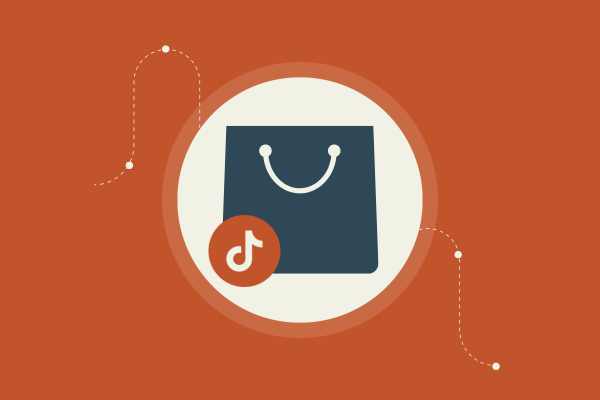How the Cash Conversion Cycle Impacts Scaling: Boost Your eCommerce Game
The cash conversion cycle (CCC) is like the secret sauce for scaling your eCommerce business. Mastering it can make or break your financial stability. The CCC is all about the time it takes for cash to turn back into cash through sales. You want this cycle as short as possible to keep your business humming.
Imagine having a warehouse full of stuff, money tied up, just sitting there. What if you could cut that time in half? You’d have more cash on hand to fuel growth, grabbing opportunities as they come.
Managing your inventory and payables better will get you there. Smart strategies can boost your cash flow, giving you room to breathe and grow.
Understanding the Cash Conversion Cycle
Understanding your Cash Conversion Cycle (CCC) is the key to scaling your eCommerce business. It influences cash flow, inventory management, and overall profitability.
Components of the CCC
The CCC includes three main parts. First, Days Inventory Outstanding (DIO) tells you how long it takes to sell inventory. Shorter is better here, as it means you’re moving stock quickly.
Next, you've got Days Sales Outstanding (DSO). This measures the average number of days it takes to collect payment after a sale. Faster collection = better cash flow.
Finally, there's Days Payable Outstanding (DPO). This one is all about how many days you can stretch before paying your suppliers. A longer DPO means you get more time to use cash for other operations.
Why CCC is Crucial for E-Commerce
Want to scale your business? Manage your CCC. A shorter cycle improves cash flow and reduces the need for external funding.
In eCommerce, speed is everything. A tight CCC means you’re selling products quickly and collecting payments faster. This boosts your profitability and gives you more flexibility in financial operations.
Poor CCC management, though, can choke your cash flow and mess up inventory management. That’s why staying on top of it is a game-changer for online retailers.
Calculating Your CCC
Let’s break down the math. CCC = DIO + DSO - DPO. Simple, right? Here's the deal.
Calculate your average inventory to figure out DIO. Then, get your average accounts receivable for DSO. Lastly, know your average accounts payable to figure DPO.
Regularly reviewing these numbers helps you spot opportunities or issues in your process. It’s like having a dashboard for your business’s health. Get this equation right, and you’re on the path to smoother scaling up.
Optimizing Inventory Management
Streamlining inventory management is crucial for boosting your eCommerce business. Get the balance right, and you will reduce holding costs and improve cash flow. It's about efficiency and having the right stuff on hand when your customers want it.
Reducing Days Inventory Outstanding
Days Inventory Outstanding (DIO) tells you how many days your inventory stays unsold. A lower DIO means you're selling faster, which boosts cash flow.
Focus on improving turnover speed, so your money isn't tied up in unsold goods. Review demand trends regularly and adjust your strategies accordingly.
Use tech to track stock levels and sales data. This helps you identify slow-moving items and decide whether to discount or stop restocking them. A well-managed supply chain will keep your DIO in check and increase liquidity.
Balancing Stock Levels and Demand
Keeping stock balanced with demand can be tricky but is vital for efficient working capital management.
Overstocking ties up your money, increasing storage costs and risk of obsolescence. Understocking leads to missed sales opportunities and unhappy customers.
Use demand forecasting to align your inventory with expected sales. This way, you can better control your inventory turnover and keep the cost of goods sold (COGS) in check.
Lean on systems that offer real-time data analytics. This helps you adjust quickly to changes in demand and maintain operational efficiency while supporting sustainable growth.
Strategies for Managing Receivables
To supercharge your eCommerce cash flow, you gotta manage those receivables like a pro. Get the money faster and keep customers happy. Here’s how to make that happen.
Accelerating Payment Collection
Speed is the name of the game. The faster you collect, the better your cash cycle.
First, tighten your days sales outstanding (DSO). This means shrinking the time between making a sale and seeing the cash.
Use automated invoicing to send invoices out instantly. Offer incentives for early payments—think discounts!
Switch to flexible payment options. Try various methods like credit cards and mobile payments. This makes it easy for customers to pay you right away.
Keep an eye on accounts receivable regularly. Use analytics tools to spot patterns and adjust your strategies fast. Streamline your payment processing and get that cash flowing quick.
Customer Acquisition and Retention
Want to keep your cash flow strong? Nail down your customer acquisition and retention.
Happy customers pay on time and become repeat buyers.
Focus your marketing budget on the right audience. Invest in marketing strategies that bring high-value customers.
Use agile marketing tactics like A/B testing for better targeting.
Retention is cheaper than acquisition. Reward loyal customers with exclusive deals or bonuses.
Build a strong relationship to gain a competitive advantage. Send personalized follow-ups and thank you messages. This keeps your brand top-of-mind and encourages on-time payments. Happy customers mean a smooth cash cycle, boosting your eCommerce success.
Effective Management of Payables
Managing payables effectively is a game-changer for your cash flow. It boosts your liquidity and strengthens your supplier relationships. Let's dig into two key strategies: extending Days Payable Outstanding and negotiating terms.
Extending Days Payable Outstanding
Stretching out your Days Payable Outstanding (DPO) is like giving your business a free loan. It means keeping your money longer, improving your cash flow without extra financing.
By managing DPO, you increase liquidity and keep cash in your pocket to invest in growth.
To extend DPO, prioritize building strong relationships with suppliers. Trust is key.
Suppliers may be more likely to trust you with longer payment terms if you have a good history of paying on time.
Be transparent. If things are tight, communicate openly with suppliers. They might offer flexibility to avoid losing your business.
Remember, extending DPO isn't about dodging bills; it's about timing payments smartly.
Negotiating Supplier Terms
Negotiating favorable terms with suppliers can greatly impact your financial health. Think of it as opening an account payable strategy session with a friend. You want terms that support your growth.
Start by defining what terms you need, like longer payment schedules or bulk discounts.
Use your business history as leverage. If you’ve been a reliable partner, highlight that.
The relationship matters here, too. Suppliers who appreciate your business may offer better conditions.
Focus on win-win solutions. You get more time and flexibility, while they secure your continued partnership.
Remember, the goal is mutual benefit. Good negotiations reinforce your relationship and open up more financing options, helping you scale up effectively.
Boosting Cash Flow for Growth
To scale your eCommerce business, you've got to keep that cash flowing like a river. Cash flow fuels growth and opens doors to new opportunities. Let's dive into some smart strategies to supercharge your cash position.
Cash Flow Techniques
One of the best ways to pump up your cash flow is by optimizing your cash conversion cycle. Focus on how fast you can turn inventory into cash.
Streamline inventory management to reduce excess stock. This frees up money that you can use elsewhere.
Speeding up your receivables is another power move. Use invoice factoring or offer early payment discounts. These tactics put cash in your hands faster.
Cut down on payment terms with vendors where possible. Every day counts when you’re aiming for peak operational efficiency.
Look at your expenses through a magnifying glass. Prioritize spending that directly supports business performance and growth.
Delay non-essential purchases and negotiate better terms with suppliers. Every saved dollar is an extra dollar for growth.
Leveraging Short-Term Assets
Short-term assets like inventory, receivables, and marketable securities can be more than just balance sheet items. They can be your secret weapon for growth.
Convert excess inventory into cash through clearance sales or bundles. This boosts immediate cash flow and clears space for better-selling items.
Marketable securities offer another avenue. These are investments you can quickly sell if needed.
Consider them as a financial cushion. They can provide quick financing options when opportunities arise or in case of emergencies.
Use these assets wisely, balancing them against risks and returns, to strengthen your cash management strategy.
Remember, effective cash flow management is about making your assets work as hard as you do. Keep an eye on these assets, and they’ll pay off in dividends.
Tech Integration for CCC Efficiency
To make your e-commerce business more efficient, tech integration in the Cash Conversion Cycle (CCC) can be a game changer. By streamlining order fulfillment and using data to drive better decisions, you can tackle inefficiencies and boost your financial health.
E-Commerce Systems and CCC
Incorporating e-commerce systems with your CCC leads to smoother business operations. These systems help manage inventory, track orders, and handle payments efficiently.
Your integration capabilities matter—you want platforms that talk to each other. This ensures your order fulfillment process is quick and reliable.
Automated software updates inventory levels in real-time. When stock is managed better, your financial management improves, reducing cash tied up in inventory.
Look for systems that offer scalability as your business grows. This flexibility is crucial to adapting to increased demand without undue stress on operations.
Connecting financial data with sales analytics helps create a clearer picture of your cash flow needs.
Data Analysis for Better Decision Making
Data analysis is your secret weapon. It provides insights into your CCC and points out inefficiencies in your operations.
By leveraging data, you can make informed decisions that support business growth. Modern tools can crunch numbers and reveal trends you might miss.
Identify patterns in sales and inventory turnover. Use this info to forecast accurately and adjust strategies.
Real-time dashboards help you act quickly, preventing cash flow gaps. You can also spot potential bottlenecks in your order process.
Armed with data, you refine marketing and improve financial health.
Technology isn't just a tool. It's how you sharpen your edge and get ahead of the competition.
Planning for Long-Term Stability
Now, let’s focus on the future. A solid plan is vital for scaling without tripping over cash flow hiccups.
Begin by assessing your net operating cycle. How quickly does cash rotate through your business? A short net cycle can lead to more opportunities for expansion.
Be mindful of your working capital. You need it for daily operations and for grabbing new growth chances. If your CCC is high, you might struggle with liquidity. It’s like trying to run a marathon with a full backpack. You want to keep that load light.
Set goals not just for sales, but for financial stability. Aim for a CCC that helps you grab new opportunities without leaving your business in a risky spot.
Planning for stability ensures your business can thrive both now and down the line.







